Hey, Chicago. It finally feels better outside. Everyone breathe a sigh of relief with me. Sigh. We made it.
Now that it’s officially patio season, it’s time to get out and enjoy the sun. Which has me wondering…should my houseplants join me outside? Can they?
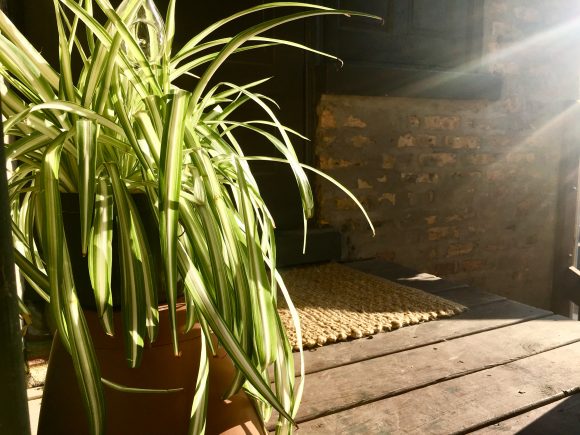
The process of moving indoor plants outside, called “hardening off,” typically happens around when nighttime temperatures stay above 42 degrees Fahrenheit. By now, pots are popping up all along back wooden porches across the city. But if you have little to no outdoor space—like me—it can be a challenge to give your houseplants a much needed breath of fresh air.
I turned to Heather Sherwood, senior horticulturist at the Chicago Botanic Garden, who lives in Chicago. She has an open lot next to her apartment, but also has some restrictions like me. Her lot gets 100 percent shade, so she can’t even grow vegetables. My apartment has an eastern exposure back stairwell, with mostly shade and some indirect morning light.
Here’s what she says about putting my plants outside:
- Be careful about sunburn. Sunburn isn’t a concern just for us humans. Plants can get scorched, too. Don’t put them in blazing sunlight. Porches with shade are prime locations for orchids and birds of paradise plants.
- The outdoors makes your plants happy. A lot of plants really enjoy the strong swing in temperature that only the outdoors can provide, said Sherwood. If you have the space for it, and moderate sunlight, your indoor houseplants would love to feel the extended daylight.
- Keep a watchful eye. You’ll need to water outdoor plants more often, said Sherwood. Plants dry out much quicker in the sun, so check them daily. Also be aware of the weather forecast; if it’s predicting wind and rain, you may want to bring your plant babies back inside until it blows over.
Of my plant collection, Sherwood said my spider plant would probably do best outside. She also recommended elephant ears as a new outdoor option. I don’t have room in my apartment for a large plant, but I’ll keep that idea in my back pocket.
I’m going to bring my spider plant outside and see how it fares over the next few weeks. Who knows, maybe I’ll even start a vegetable container. Stay tuned!
Plant Family Check-ups
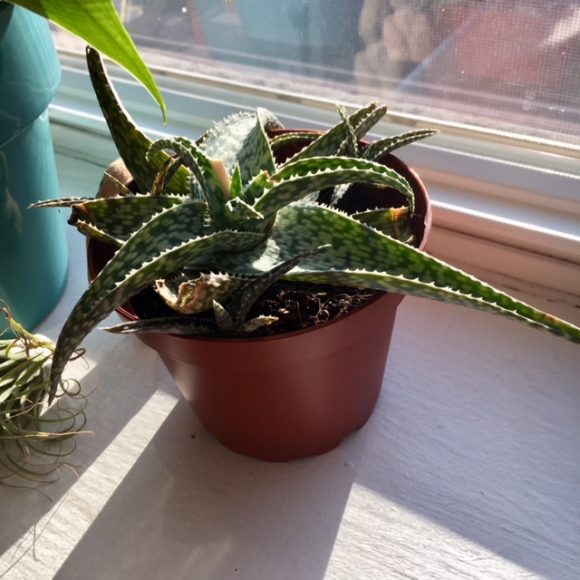
I’m not sure whether it’s OK, because the tips of its leaves are a little brown and soggy. I don’t think it’s dead, though. I think. I hope.
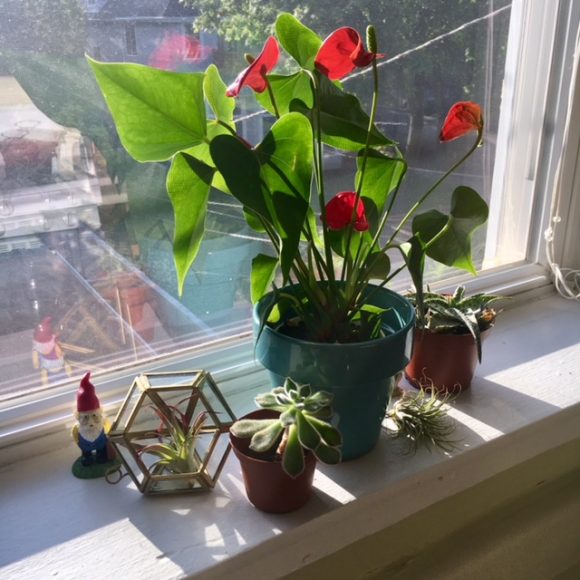
New growth! I spotted a few red blooms shooting up from the soil, and it’s made me so happy. This is my favorite plant. Shhh…don’t tell the others.
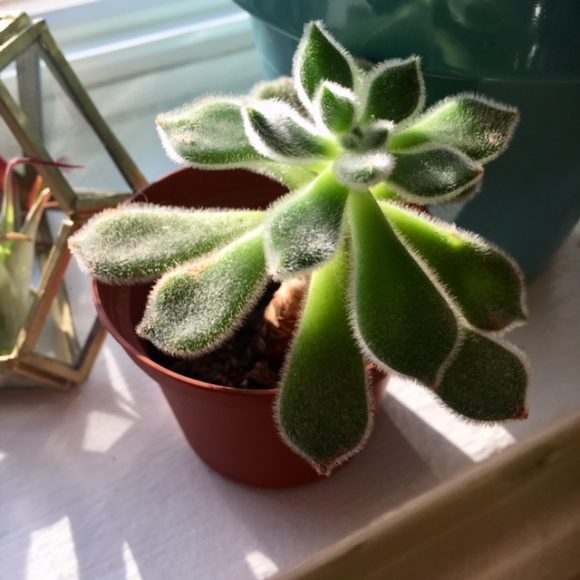
This one is the most worrisome of the crew. It hasn’t lost any more leaves, but it still doesn’t seem too happy. I moved it out of direct sunlight, and have been resisting watering it, but the leaves still feel a little soft and squishy. Keeping an eye on this one.
©2018 Chicago Botanic Garden and my.chicagobotanic.org

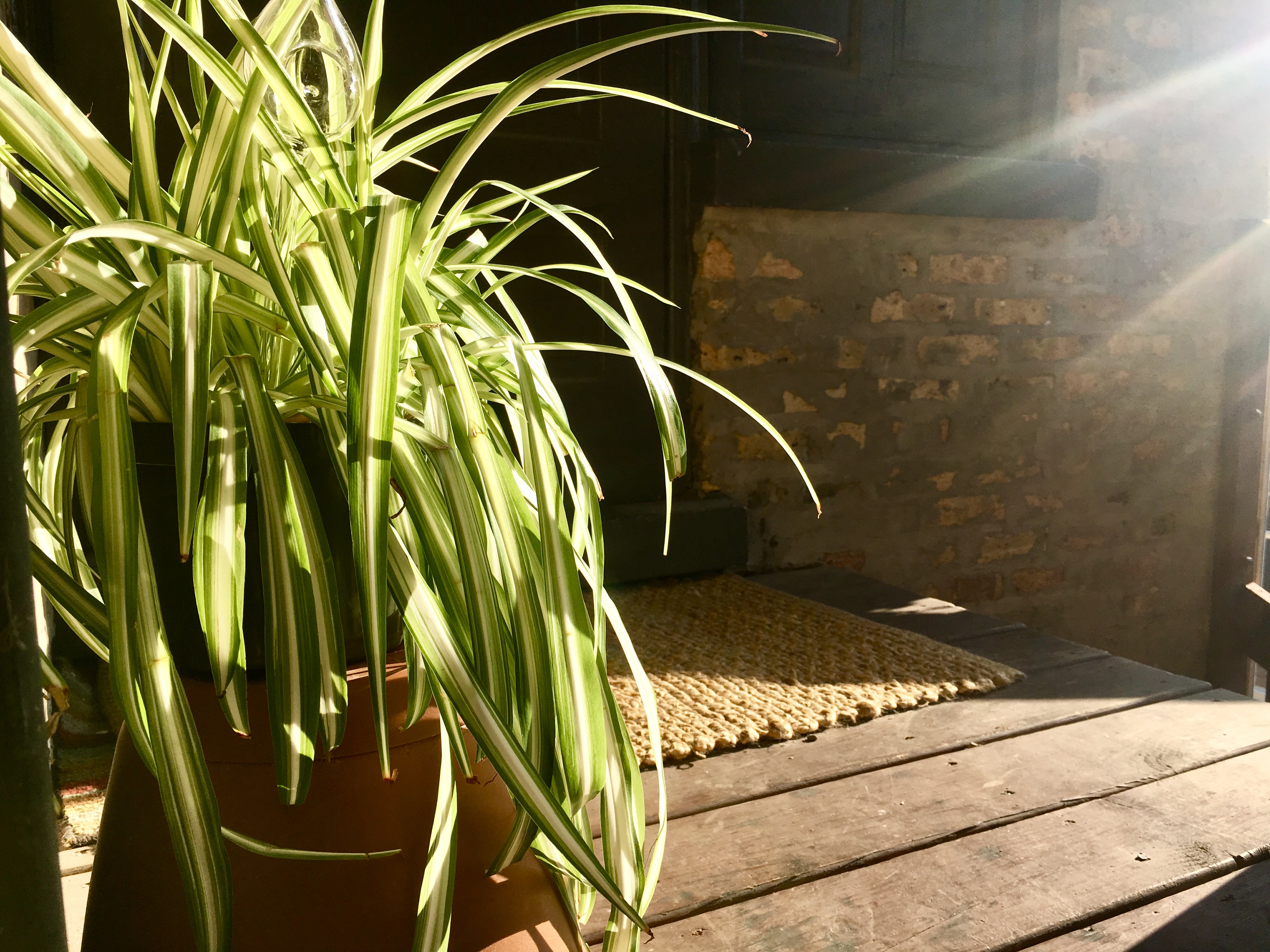
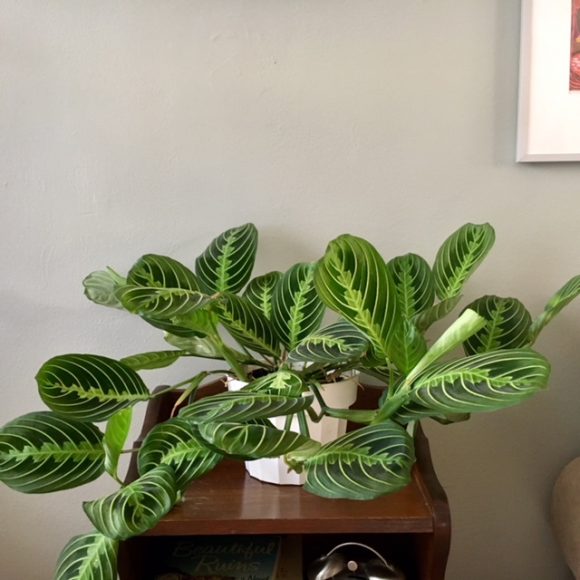
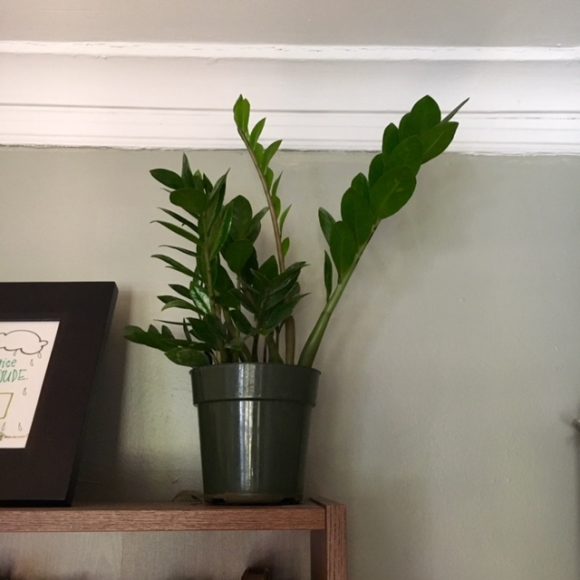
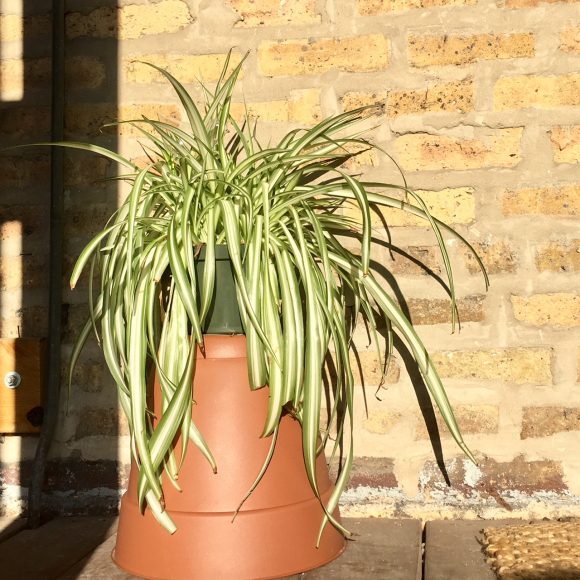
Love your plant diary for the uninitiated or without a lot of time or space for indoor plants. I’ve been using your phrase about be a “bad” plant mom to assure folks that trial, error, even failure, is okay.
That means a lot, Nancy! You’re so right. When you’re a beginner—at anything—you have to remember to be kind to yourself. It’s all about trial, error, and yes, failure. It’s okay to make mistakes! That’s how you learn.
Keeping our plants moving will make them healthy and they will get some good amount of light outside. It is important for indoor plants, you always come with a new thing.
Couldn’t agree more!
Gardeners also tend to share the produce they grow, thus improving the vegetable intake of their friends and family and keeping them connected to their social network.